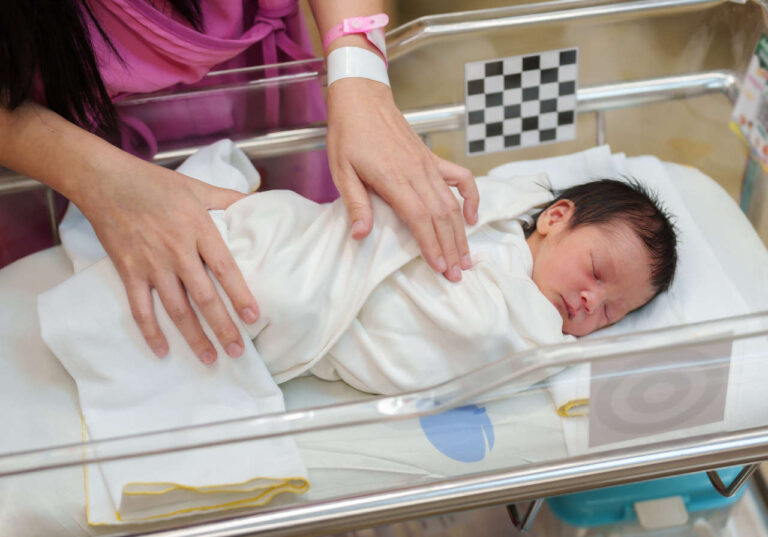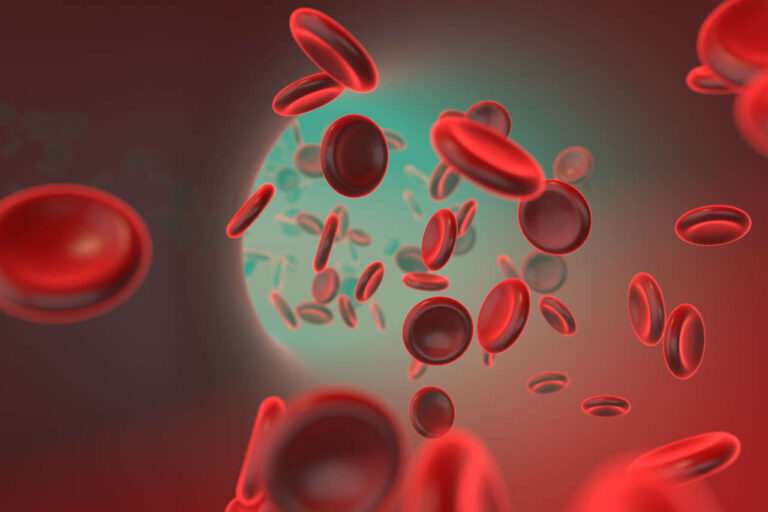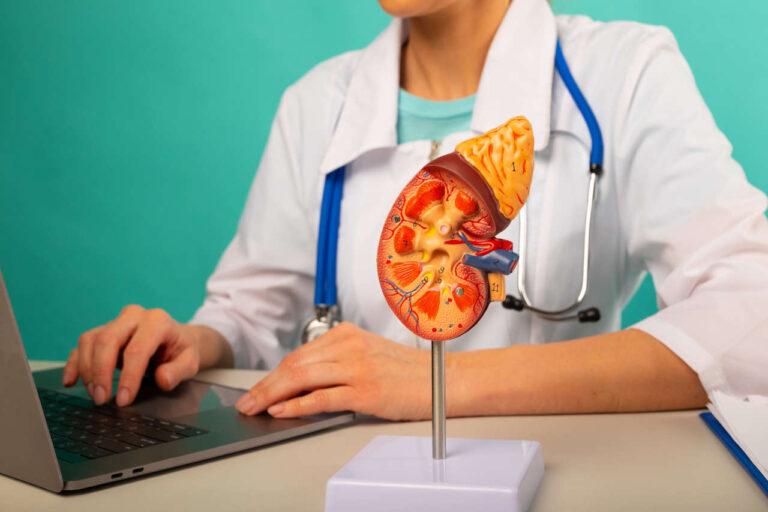
If your child suddenly begins having unusual, rapid eye movements or starts showing jerky, uncontrollable muscle movements, these could be signs of a condition called Opsoclonus-Myoclonus Syndrome (OMS).
Get IVIG Copay Assistance
OMS is a neurological disorder that mostly affects young children, but sometimes adults can also be affected. OMS can be a challenging condition to manage for both patients and their families. But it can be treated if caught early.
Research shows that adding IVIG early to standard OMS treatment (i.e., corticosteroids) can double the response rate and improve neurologic recovery in children diagnosed with OMS. Read on to learn what OMS is, why it happens, and how IVIG can help you or your child get back to living a healthy life.
What Is Opsoclonus-Myoclonus Syndrome (OMS)?
Opsoclonus-Myoclonus Syndrome is a rare and complex neurological disorder that can result from an immune system attack on the nervous system. Less than 1,000 people in the U.S. have OMS.
It is slightly more common in girls than boys. The OMS symptoms often begin suddenly and progress quickly. In most cases, especially in children, symptoms start to appear between 6 months and 3 years of age.
Common signs and symptoms of OMS include:
- Rapid involuntary eye movements in all directions (opsoclonus)
- Quick, involuntary jerking or twitching of muscles (myoclonus)
- Impaired balance (ataxia)
- Speech problems
- Behavioral difficulties and sleep disturbances
- Cognitive impairment (especially in children)
OMS is also known by other names, such as dancing eye-dancing feet syndrome, Kinsbourne syndrome, opsoclonic encephalopathy, or opsoclonus-myoclonus-ataxia syndrome (OMA).
What Causes Opsoclonus-Myoclonus Syndrome (OMS)?
Although the exact cause of OMS is still being studied, scientists believe it is autoimmune in nature, which means the body’s immune system mistakenly attacks healthy nerve cells in the brain.

In about 40% to 80% of pediatric cases, OMS develops due to an underlying disease like neuroblastoma tumor (a cancer that develops in nerve tissues). When the body’s defense mechanism (immune system) initiates an immune response against the tumor cells, it also ends up affecting the nervous system. The activation of B and T cells releases autoantibodies and inflammatory molecules (cytokines) within the brain, which damage nerve cells and cause inflammation in the brain stem and cerebellum (a part of the brain that controls eye movement, speech, and muscle coordination).
Furthermore, around 60% of OMS cases in adults are linked to small cell lung cancer, breast cancer, or ovarian cancer, while others may result from viral CNS infections or other unknown immune triggers.
Speak to a Specialist
About Copay AssistanceHow Effective Is IVIG for Patients With Opsoclonus-Myoclonus Syndrome?
Clinical trials to determine the efficacy of IVIG when used alone or in combination with other therapies are limited due to the rarity of this disease. However, some case reports have shown that IVIG therapy is effective when used alone.
Conversely, some research studies show that IVIG tends to yield better results when combined with standard treatment like steroids (or ACTH) and often rituximab.
- IVIG as a Monotherapy: Clinical Evidence
IVIG monotherapy may be considered in selected situations, typically when adults with post-infectious OMS do not respond to steroids, and when other immunosuppressants are contraindicated.
For instance, a case report described a 63-year-old woman who tested positive for West Nile virus and developed progressive opsoclonus-myoclonus. She was treated with a 2-day course of IVIG alone — without steroids or other immunosuppressants — and achieved complete neurological remission by the 8-week follow-up.
Similarly, in a reported case of SARS-CoV-2 infection, a patient developed opsoclonus-myoclonus syndrome characterized by psychosis, chaotic eye movements, and multifocal myoclonus. The patient was successfully treated with IVIG therapy.
- IVIG in Combination With Standard Therapies: Clinical Evidence
In most pediatric OMS and many adult paraneoplastic cases, IVIG is used as part of a multimodal regimen to prevent relapses and improve outcomes. A 2025 cross-sectional study published in the Italian Journal of Pediatrics demonstrated that IVIG combined with dexamethasone and rituximab reduced relapses and permanent neurological sequelae in OMS children.
Likewise, a systematic pediatric review demonstrated that OMS patients treated with IVIG, corticosteroids, and rituximab/cyclophosphamide had significantly better motor, language, and IQ outcomes, as well as lower relapse rates, compared to those treated with corticosteroids/ACTH alone.
In short, IVIG alone can be effective, especially in adults with post-infectious OMS, but when combined with steroids, ACTH, or rituximab, it gives the best results in children. This multi-pronged approach attacks the autoimmune response from different angles.
IVIG for Opsoclonus-Myoclonus Syndrome: How It Works
The exact working mechanism of IVIG in OMS patients is unclear. However, research shows that IVIG dampens the immune response and reduces neuroinflammation in the following ways:
- It Blocks Harmful Autoantibodies
IVIG contains healthy antibodies that bind to and neutralize the harmful autoantibodies that attack the nervous system in OMS.
- It Modulates Immune Cell Activity
IVIG affects immune cells, primarily B cells (which make autoantibodies) and T cells. It reduces their overactivity, leading to a decrease in the production of autoantibodies and cytokines. This helps restore the immune system to balance.
- It Regulates Cytokines and Reduces Neuroinflammation
In OMS, the central nervous system shows evidence of immune activation, including elevated levels of inflammatory cytokines — molecules produced by activated B-cells, T-cells, and other immune cells. IVIG helps reduce neuroinflammation by decreasing the production of these pro-inflammatory cytokines.
By reducing inflammation and stopping the immune attack on the brain, children and adults with OMS experience:
- Improved eye movement
- Decreased muscle jerks
- Return of balance and coordination
- Recovery of speech and cognitive skills
- Reduced risk of relapse, especially when IVIG is started early
Get Financial Assistance
Are There Any Side Effects of IVIG?
Yes, IVIG can cause some side effects, though many are mild and temporary. Patients may experience some side effects like nausea, headache, chills, or fever during or after the IVIG infusion. However, with proper monitoring and infusion protocols, these side effects are manageable.
In rare cases, aseptic meningitis, thrombosis, kidney problems (especially in those with pre-existing kidney disease), or allergic or anaphylactic reactions may also occur, requiring careful monitoring during the IVIG process.
When and How Long Is IVIG Therapy Given to OMS Patients?
IVIG treatment usually begins soon after diagnosis to help calm the immune system and ease symptoms like rapid eye movements and muscle jerks. It is often used alongside steroids or other medications.
Children and adults with OMS may receive an initial dose of 1 – 2 g/kg given over two to five divided doses, followed by a maintenance dose of 0.4 – 1 g/kg administered every 4 to 6 weeks to keep symptoms under control.
Treatment can last from several months to a couple of years, depending on the patient’s response and whether any relapses occur.
Talk to your healthcare provider if you’re considering IVIG for Opsoclonus-Myoclonus Syndrome as part of your OMS treatment plan. They can help you understand what to expect based on the severity of your symptoms and your overall health condition.
REFERENCES:
- Matthay, K. K., London, W. B., Naranjo, A., Tenney, S. C., Panzer, J. A., Hogarty, M. D., Park, J. R., Maris, J. M., & Cohn, S. L. (2017). Intravenous immunoglobulin with prednisone and risk-adapted chemotherapy for children with opsoclonus myoclonus ataxia syndrome associated with neuroblastoma (ANBL00P3): A randomised, open-label, phase 3 trial. The Lancet Child & Adolescent Health, 2(1), 25. https://doi.org/10.1016/S2352-4642(17)30130-X
- Auconi, M., Papetti, L., Ruscitto, C., Noris Ferilli, M. A., Ursitti, F., Sforza, G., Vigevano, F., & Valeriani, M. (2021). Opsoclonus-Myoclonus Syndrome in Children and Adolescents: A Therapeutic Challenge. Children, 8(11), 965. https://doi.org/10.3390/children8110965
- Pranzatelli, M. R., & Tate, E. D. (2017). Dexamethasone, Intravenous Immunoglobulin, and Rituximab Combination Immunotherapy for Pediatric Opsoclonus-Myoclonus Syndrome. Pediatric Neurology, 73, 48-56. https://doi.org/10.1016/j.pediatrneurol.2017.04.027
- He, F., Kessi, M., Zhang, C., Peng, J., Yin, F., & Yang, L. (2025). The utilization of the multimodal immunotherapy for the opsoclonus–myoclonus syndrome can reduce relapses and permanent neurological sequelae. Italian Journal of Pediatrics, 51, 33. https://doi.org/10.1186/s13052-025-01875-2
- Stolpa, W. (2020). The Treatment of Opsoclonus-Myoclonus Syndrome Secondary to Neuroblastic Tumours—Single-Centre Experience and Literature Review. Medicina, 56(8), 412. https://doi.org/10.3390/medicina56080412
- Unal, Aysun; Sumer, M. Murat; Atasoy, H. Tugrul; Atasoy, Nuray. (2004). Treatment of idiopathic opsoclonus-myoclonus syndrome with intravenous immunoglobulin. Neurology India 52(4):p 520-52. https://journals.lww.com/neur/fulltext/2004/52040/treatment_of_idiopathic_opsoclonus_myoclonus.36.aspx#:~:text=The%20response%20to%20immunotherapy%20is,1
- Castañón-González, A., Barragán-Pérez, E., Hernández-Pliego, G., & López-Valdés, J. (2019). Immunosuppressive therapy in opsoclonus-myoclonus-ataxia syndrome associated with paravertebral neuroblastoma. Neurología (English Edition), 35(1), 54–56. https://doi.org/10.1016/j.nrleng.2017.06.003
- Rossor, T., Yeh, E. A., Khakoo, Y., Angelini, P., Hemingway, C., Irani, S. R., Schleiermacher, G., Santosh, P., Lotze, T., Dale, R. C., Deiva, K., Hero, B., Klein, A., De Alarcon, P., Gorman, M. P., Mitchell, W. G., & Lim, M. (2022). Diagnosis and management of Opsoclonus-Myoclonus-Ataxia syndrome in children. Neurology Neuroimmunology & Neuroinflammation, 9(3). https://doi.org/10.1212/nxi.0000000000001153












